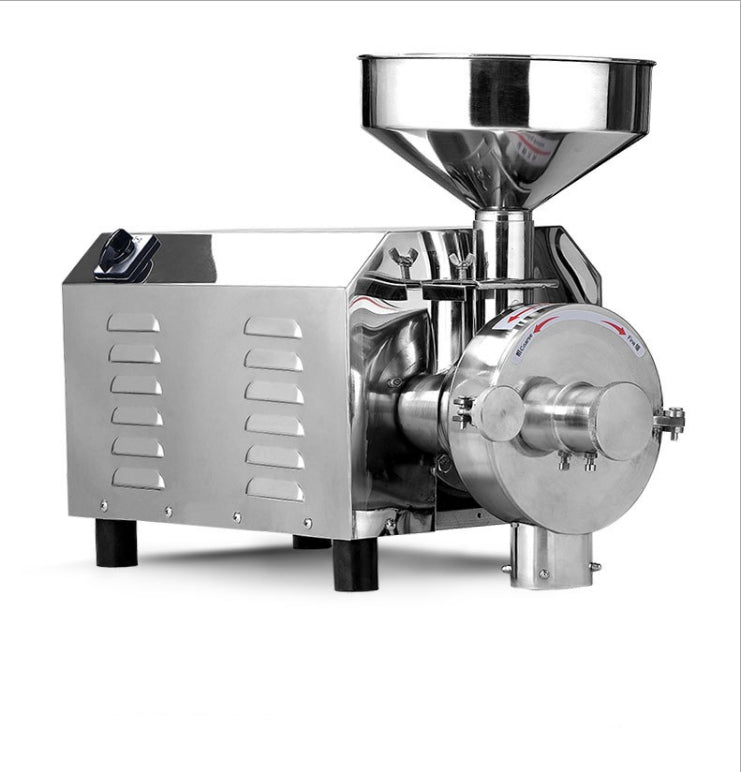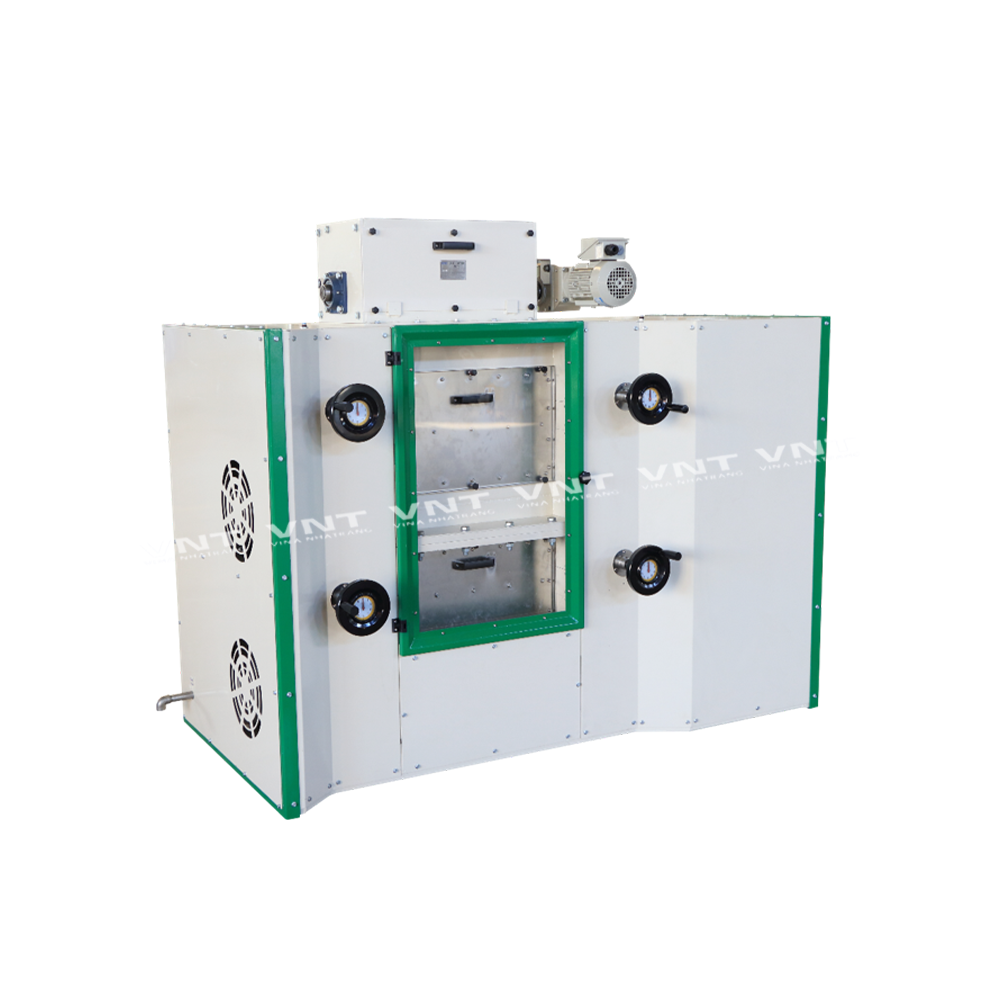Leading Attributes to Search For in an Industrial Coffee Grinder
When reviewing a commercial coffee mill, it is vital to determine crucial features that influence both performance and longevity. Consistency in grind dimension is important for optimum extraction, while adjustable grinding rate enables a balance in between performance and quality. Additionally, the option of materials and layout adds significantly to sturdiness and convenience of upkeep. Nonetheless, the nuances of these features can significantly affect not just the high quality of coffee generated but likewise the overall functional effectiveness. Comprehending these aspects is crucial for making an informed choice that meets certain business demands.
Grind Size Consistency
While various variables can affect the high quality of made coffee, grind dimension uniformity continues to be paramount in attaining ideal extraction. The uniformity of coffee grounds directly affects the brewing procedure, as irregular fragment dimensions can result in over-extraction or under-extraction. This inconsistency leads to unbalanced flavors, where particular notes may be overpowering while others are muted.
Industrial coffee mills are designed to give a high level of accuracy, typically utilizing burr grinding systems to make certain a consistent grind size. Unlike blade mills, which can create a mix of penalty and coarse bits, burr grinders crush the beans between 2 surface areas, enabling for far better control over work dimension. This consistency is important across various developing techniques, whether espresso, French press, or pour-over, as each strategy needs specific work sizes for optimal flavor extraction.
Additionally, uniformity in grind dimension adds to the overall performance of the developing procedure. A consistent grind permits even water flow, lowering the danger of carrying and boosting extraction effectiveness. In recap, buying a commercial coffee grinder with a focus on grind dimension uniformity is necessary for achieving high-quality coffee with desirable flavor profiles.
Grinding Rate
Grinding rate plays a vital function in the overall efficiency of industrial coffee mills, straight influencing both the top quality of the work and the efficiency of the procedure. Industrial Coffee Grinder. Greater grinding speeds can dramatically enhance the throughput, making it possible to process larger amounts of coffee beans in a shorter amount of time. This is especially crucial for companies that rely upon high-volume manufacturing, such as coffee roasteries and cafes
Nevertheless, while rate is essential, it is equally important to balance it with the quality of the work. Exceedingly high grinding speeds can produce warmth, which may negatively impact the taste account of the coffee by causing the beans to shed essential oils and scents. A grinder that supplies adjustable speed setups can offer ideal versatility, enabling operators to tailor the grinding procedure according to specific needs.
Furthermore, the grinding speed needs to correspond to ensure uniformity in the grind size, further adding to the total preference and brewing high quality of the coffee. In summary, examining grinding rate is essential for selecting an industrial coffee grinder that satisfies both productivity and top quality demands.
Build High Quality and Resilience
The efficiency of an industrial coffee grinder is not entirely determined by its grinding speed; construct top quality and resilience are equally important variables that affect long-term efficiency and integrity. A well-constructed mill will certainly endure the rigors of daily usage, making it a sound investment for any kind of industrial procedure.

Durability additionally reaches the grinder's motor and internal mechanisms. Industrial coffee mills must be equipped with heavy-duty electric motors with the ability of sustaining extended operation without overheating. Robust burrs are vital, as they straight influence the quality of the grind and add to the total long life of the machine.

Simplicity of Usage and Maintenance
Consistently focusing on simplicity of use and upkeep can substantially improve the operational performance of an industrial coffee mill. Straightforward features such as user-friendly controls and clear labeling are crucial for minimizing downtime and guaranteeing that drivers can quickly adapt to the tools. An ergonomic design, consisting of height-adjustable hoppers and accessible grinding chambers, permits comfortable operation and facilitates the loading and dumping of coffee beans.
In addition, convenience of upkeep is essential for lengthening the life expectancy of the mill. Equipment with detachable components and elements created for fast cleaning can streamline upkeep jobs, reducing the time spent on routine upkeep - Industrial Coffee Grinder. Look for mills that include self-cleaning mechanisms or need minimal disassembly, as these functions can save beneficial labor hours
In addition, clear maintenance routines and paperwork are vital. Mills that feature thorough user guidebooks outlining upkeep procedures can assist operators follow ideal methods, guaranteeing consistent efficiency and high quality. By investing in a commercial this website coffee mill that emphasizes convenience of usage and upkeep, services can enhance productivity, minimize functional prices, and preserve the high requirements anticipated in coffee production.


Noise Level Reduction
When choosing a commercial coffee grinder, noise degree reduction is an important aspect that can significantly affect the work environment. High sound levels can bring about employee fatigue, decreased concentration, and possible hearing damages in time, making it essential to pick a mill developed with sound-dampening functions.
Seek grinders that include innovative noise-reduction technologies, such as sound-insulated housings and vibration-dampening installs. These attributes help to lessen operational audios, developing a quieter ambience conducive to productivity. Industrial Coffee Grinder. In addition, picking mills furnished with low-noise electric motors can additionally enhance audio reduction, guaranteeing a more pleasurable workplace
Think about the mill's general design. Versions with incorporated sound-absorbing products can dramatically reduce sound discharges during grinding cycles. Additionally, the positioning of the grinder within the work space ought to be calculated. Positioning it on a stable, heavy surface area can aid to minimize vibrations that add to sound.
Inevitably, purchasing a coffee mill that prioritizes sound reduction not only enhances the convenience of employees yet also straightens with a dedication to keeping a productive and secure job setting. This focus to detail can cause improved staff member fulfillment and retention.
Final Thought
In summary, choosing an industrial coffee grinder demands mindful factor to consider of numerous key attributes. Grind dimension consistency is necessary for optimal extraction, while flexible grinding speed facilitates a balance between throughput and top quality.
Industrial coffee mills are designed to offer a high level of accuracy, frequently employing burr grinding mechanisms to guarantee a consistent work dimension. Unlike blade grinders, which can produce a mix of fine and rugged bits, burr grinders crush the beans between two surface areas, enabling for much better control over work size. In recap, spending in a commercial coffee mill with a focus on work dimension consistency is vital for accomplishing top notch you can try this out coffee with preferable taste accounts.
Grinding rate plays a crucial role in the total performance of industrial coffee mills, directly impacting both the top quality of the work and the performance of the procedure. A grinder that provides flexible speed settings can offer optimal adaptability, enabling operators to customize the grinding process according to details requirements.
Comments on “Industrial Coffee Grinder for Mass Brewing: What You Need to Know”